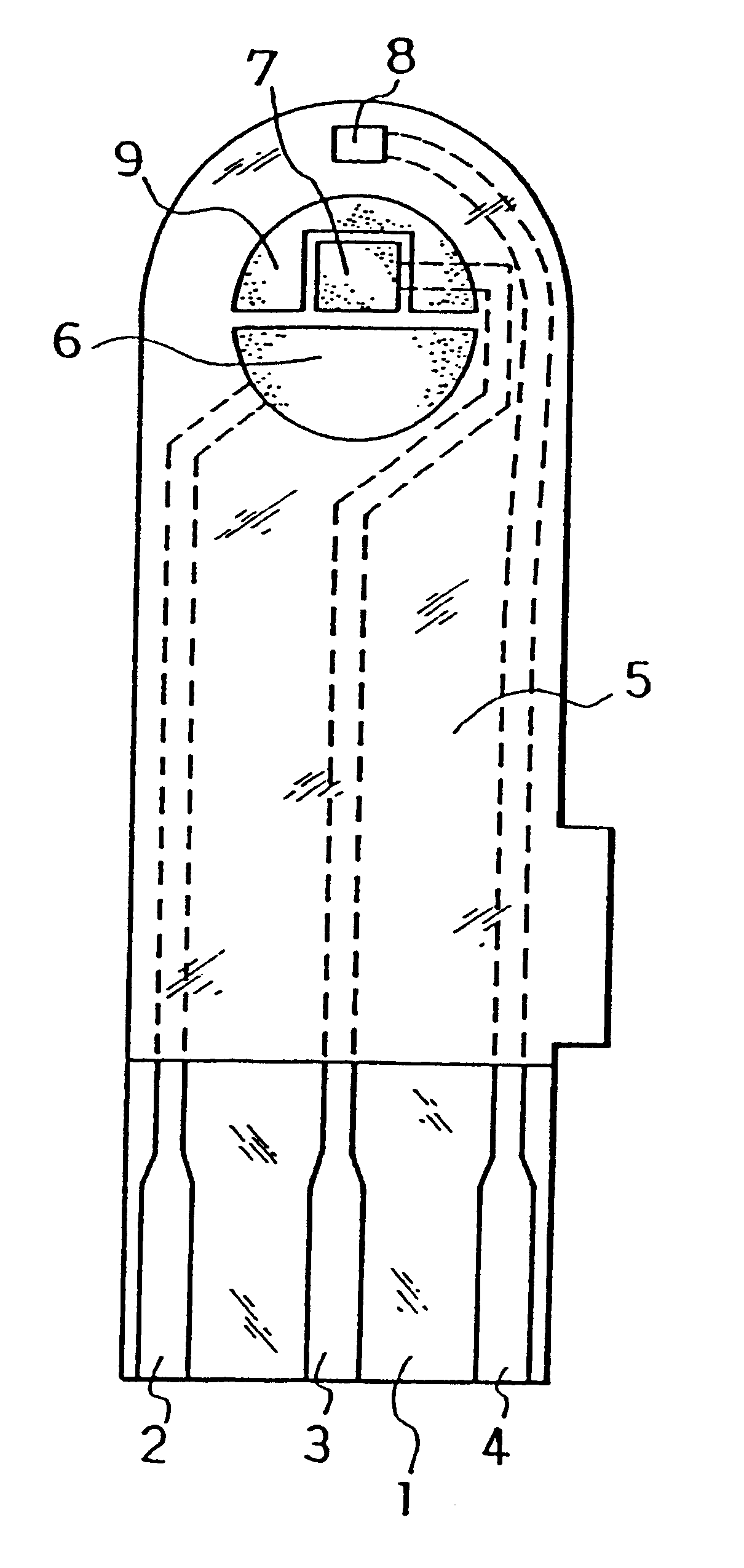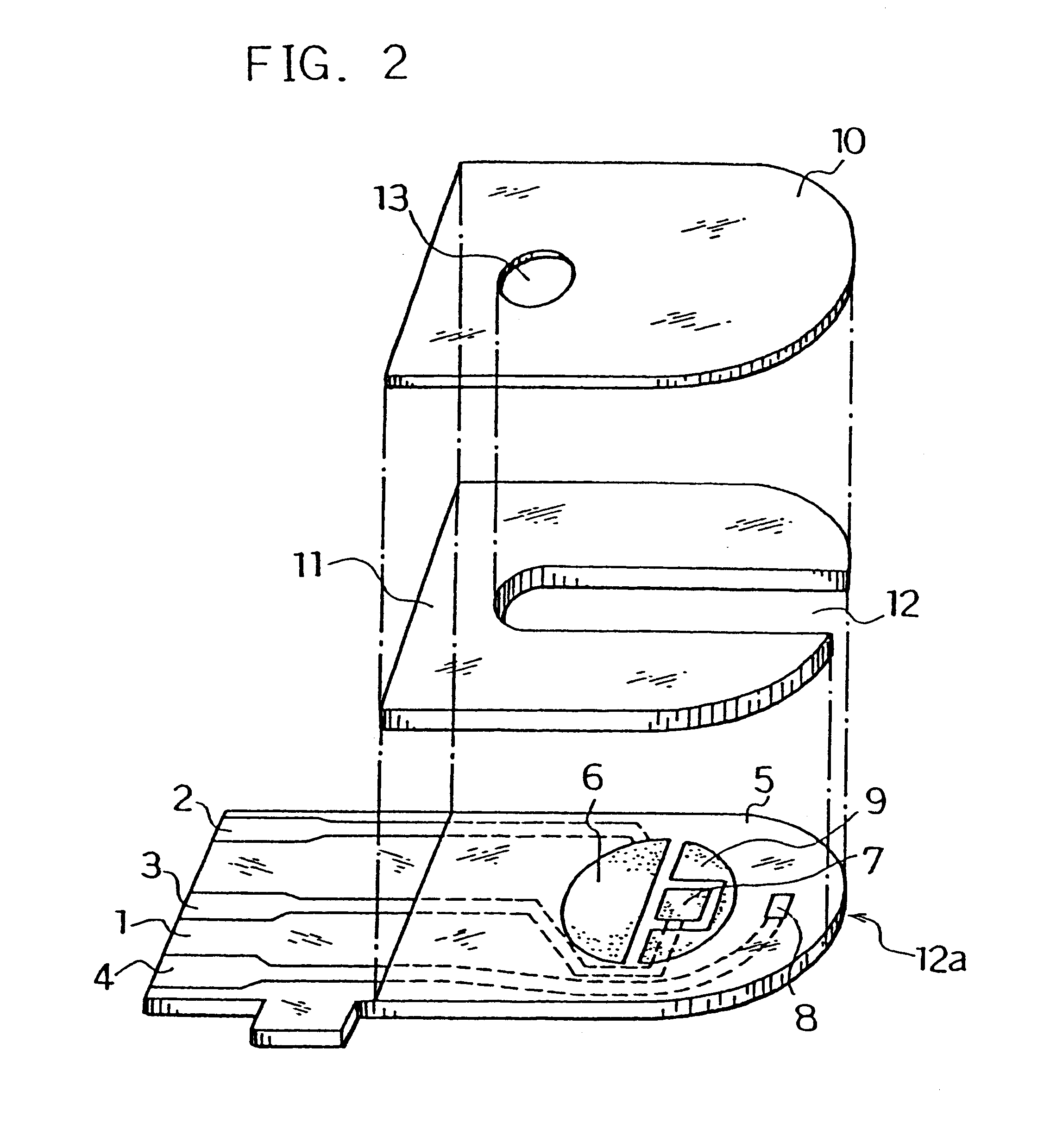Device and method for determining the concentration of a substrate
- Summary
- Abstract
- Description
- Claims
- Application Information
AI Technical Summary
Benefits of technology
Problems solved by technology
Method used
Image
Examples
example 2
The electrodes 6, 7, 8 and carbon layer 9 were formed on the base plate 1 in the same manner as in Example 1. Next, an aqueous CMC solution was dropped on the counter electrode 6, working electrode 7 and carbon layer 9 while omitting the third electrode 8 and dried to form the CMC layer, on which an aqueous solution containing GOD as an enzyme and potassium ferricyanide as an electron mediator was further dropped and dried to form the reaction layer.
Next, for further smoothing supply of the sample solution to the reaction layer, an organic solvent solution of lecithin, such as toluene solution, for example, was spread from the sample solution supply port toward the reaction layer and dried to form a lecithin layer on the reaction layer. Next, the cover 10 and the spacer 11 were bonded to the base plate 1 in a positional relationship as shown by the dotted chain line in FIG. 2 to form a glucose sensor.
The sensor was set on a measurement device and a potential of 500 mV was applied on...
example 3
A glucose sensor was produced in the same manner as in Example 2.
The sensor was set on a measurement device and a potential of 500 mV was applied onto the third electrode 8 with reference to the counter electrode 6. With the potential kept applied, an aqueous glucose solution containing ascorbic acid as an interfering substance was supplied through the sample solution supply port 12a at 3 .mu.l as a sample solution. The sample solution reached the air vent 13 by passing through the sample solution supply pathway and dissolved the reaction layer on the electrode system.
Upon supply of the sample solution, a liquid supply detecting system started to operate based on an electrical change between the counter electrode 6 and the third electrode 8 of the electrode system, which then started a measurement timer. At that time, the potential application is being continued between the counter electrode 6 and the third electrode 8, and after a lapse of a certain time from the detection of suppl...
example 4
In the same manner as in Example 2, the reaction layer was formed on the counter electrode 6, working electrode 7 and carbon layer 9 while omitting the third electrode 8.
Next, an organic solvent solution of lecithin such as toluene solution, for example, was spread on a groove formed on the cover member for forming the sample solution supply pathway and dried, thereby to form the lecithin layer for the purpose of still more smoothing supply of the sample solution to the reaction layer. Then, the cover 10 and the spacer 11 were bonded to the base plate 1 in a positional relationship as shown by the dotted chain line in FIG. 2, which gave a glucose sensor.
Positioning the lecithin layer from the reaction layer over the third electrode 8 may sometimes increase variations in sensor response characteristics due to a change of the surface of the third electrode by the lecithin layer. Positioning the lecithin layer on the cover member side as shown above resulted in a decrease in such varia...
PUM
 Login to View More
Login to View More Abstract
Description
Claims
Application Information
 Login to View More
Login to View More - R&D
- Intellectual Property
- Life Sciences
- Materials
- Tech Scout
- Unparalleled Data Quality
- Higher Quality Content
- 60% Fewer Hallucinations
Browse by: Latest US Patents, China's latest patents, Technical Efficacy Thesaurus, Application Domain, Technology Topic, Popular Technical Reports.
© 2025 PatSnap. All rights reserved.Legal|Privacy policy|Modern Slavery Act Transparency Statement|Sitemap|About US| Contact US: help@patsnap.com



